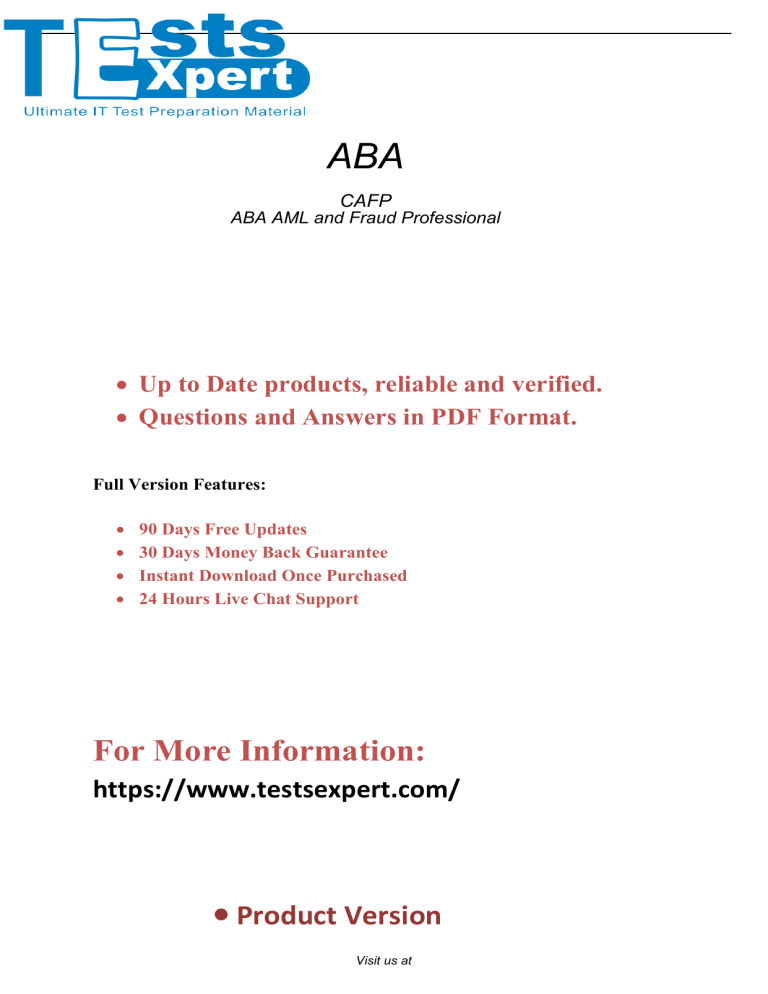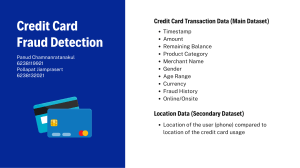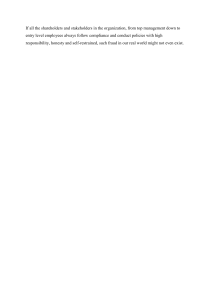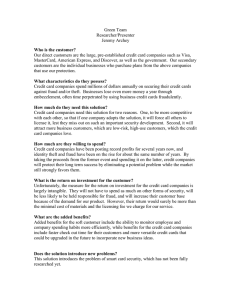
ABA CAFP ABA AML and Fraud Professional • Up to Date products, reliable and verified. • Questions and Answers in PDF Format. Full Version Features: • • • • 90 Days Free Updates 30 Days Money Back Guarantee Instant Download Once Purchased 24 Hours Live Chat Support For More Information: https://www.testsexpert.com/ • Product Version Visit us at Latest Version: 6.0 Question: 1 When managing relationships with customers and intermediaries, what is the recommended approach for higher-risk industries? Response: A. Terminate all relationships with higher-risk industries to eliminate potential risks B. Ignore regulatory requirements and focus solely on profitability C. Provide financial incentives to attract more customers from higher-risk industries D. Conduct enhanced due diligence and monitor transactions closely Answer: D Question: 2 What process should a fraud strategy team have in place to prevent system errors and losses? Response: A. Employee vacation reviews B. Monetary instrument log reviews C. Monthly fraud loss MIS D. Rule change controls to prevent inadvertent modifications Answer: D Question: 3 Under Regulation CC, what is the maximum hold period for most checks deposited in a transaction account? Response: A. 1 business day B. 3 business days C. 5 business days D. 7 business days Answer: B Visit us at Question: 4 Marketing has a new campaign idea to imbed links within an email to encourage existing customers to expand their relationship with the Bank. While going through the approval process, which of the following should be performed to ensure the initiative is successful long-term from a fraud management perspective? Response: A. Verification steps need to be deployed to validate all emails. B. Outbound calls need to take place to prospective customers to verify any resulting activities. C. A Fraud Risk Assessment needs to be performed to weigh risks and controls. D. Closely monitor new fraudulent phishing activities targeting bank customers. Answer: C Question: 5 Which regulatory body provides compliance guidance for evaluating customer risk? Response: A. Federal Reserve System (FRS) B. Financial Crimes Enforcement Network (FinCEN) C. Federal Financial Institutions Examination Council (FFIEC) D. Office of Foreign Assets Control (OFAC) Answer: C Question: 6 While performing an IT audit of a bank, it is noted that the last internet banking authentication risk assessment was completed five years ago. How should management be advised? Response: A. Perform periodic risk assessments and adjust the bank's authentication controls as necessary in response to changing internal and external threats. B. Continue to rely on the current risk assessment since the FFIEC Guidance on Authentication of Customers only requires a one-time risk assessment. C. Continue to rely on the existing risk assessment since it was completed within the last seven years. D. Ask examiners during the next IT exam to review the risk assessment and advise if any changes are needed. Answer: A Visit us at Question: 7 During a routine independent audit, a bank is cited for significant deficiencies in its BSA Program. The ultimate responsibility for ensuring that these deficiencies are appropriately addressed resides with the: Response: A. Independent auditors. B. Board or a designated committee. C. BSA Officer. D. Bank President. Answer: B Question: 8 What is the purpose of filing amendments in regulatory reporting? Response: A. To update the appropriate audience for reporting B. To submit documentation regarding card fraud loss C. To backfile reports that were previously missed D. To rectify errors or provide additional information to the initial report Answer: D Question: 9 What is a common typology for money laundering through the real estate sector? Response: A. Using shell companies to purchase properties B. Structuring cash deposits in small amounts C. Large-scale cyber attacks on real estate databases D. Engaging in online auctions for property sales Answer: A Question: 10 Visit us at When establishing and updating controls, what is the purpose of identifying procedural gaps? Response: A. To comply with regulatory requirements B. To determine the effectiveness of existing controls C. To update policies and procedures D. To identify potential risks and vulnerabilities Answer: D Visit us at For More Information – Visit link below: https://www.testsexpert.com/ 16$ Discount Coupon: 9M2GK4NW Features: Money Back Guarantee…………..……....… 100% Course Coverage……………………… 90 Days Free Updates……………………… Instant Email Delivery after Order……………… Visit us at Powered by TCPDF (www.tcpdf.org)





